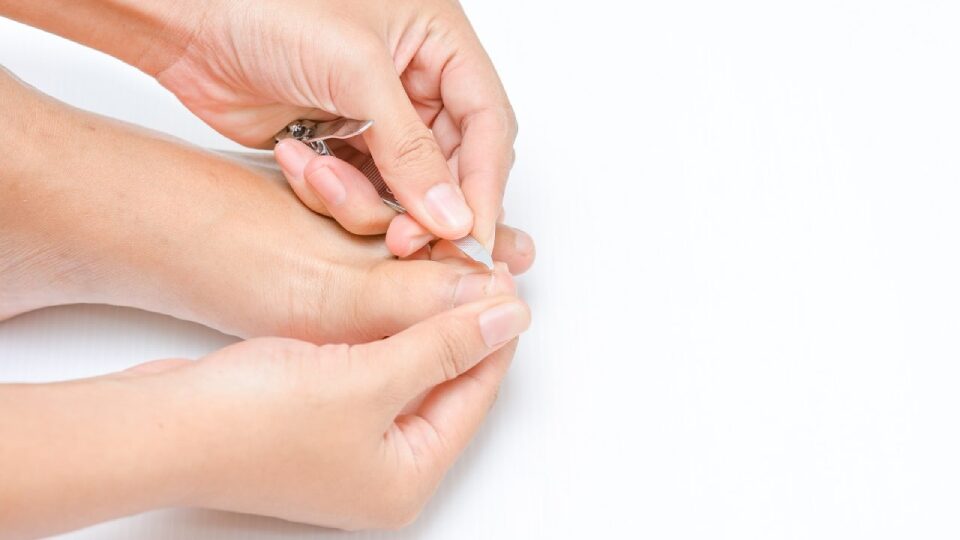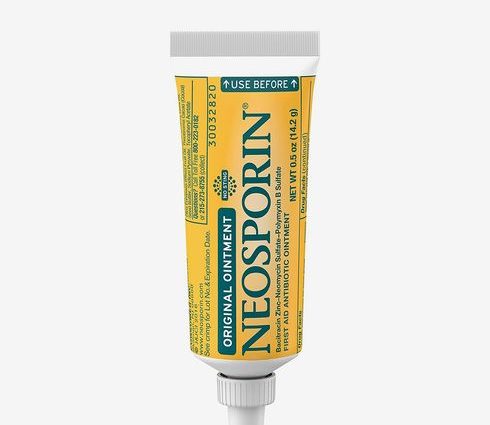Contents
Incorrectly done pedicure, short cut corner of the nail, injured fingers and foot deformity, genetic predisposition: there are a lot of reasons for ingrown nails into the skin roller. The nail grows constantly, and constantly cutting it off at the first sign of ingrowth, we only exacerbate the problem. Every day the pain begins to intensify, and soon swelling and inflammation join. As a result, as a rule, the patient gets to the doctor already when the pain becomes unbearable.
In pharmacies, there is a huge selection of effective ointments for an ingrown toenail. We will deal with a podiatrist, how to choose the best drug, in what cases it will help, and also learn how to properly care for nails in order to prevent them from growing in.

List of top 10 inexpensive and effective ointments for ingrown toenail
Levomekol
The combined preparation contains a broad-spectrum antibiotic and an immunostimulating agent dioxomethyltetrahydropyrimidine. The ointment helps to reduce inflammation and heal after surgical treatment of an ingrown toenail. The antibiotic in the composition of the product helps to fight purulent processes in the wound and prevents the development of complications. The product is available in the form of a white ointment with a yellowish tint.
Contraindications : hypersensitivity to the components of the drug, lymphogranulomatosis, hemoblastoses, malignant diseases of the bone marrow, children under 3 years of age.
Uroderm
This remedy is available in the form of a white ointment with a faint smell of ammonia. Due to the urea in the composition, the drug helps to loosen the nail plate and retains water in it. Due to this, the nail softens and becomes more flexible. True, such drugs can only help in the initial stages of an ingrown nail.
Contraindications : hypersensitivity to the components of the drug.
Dimexide
It is a colorless or yellowish gel with a slight specific odor. Also, the drug is available in the form of a solution for external use.
The product contains an anti-inflammatory and analgesic component dimethyl sulfoxide. Penetrating into the focus of inflammation, the drug has an antiseptic, absorbable and anti-edematous effect. It can be used to treat an ingrown toenail, as well as bruises and sprains. In addition, it is a conductor for other medicines, for example, for antibacterial ointments.
Contraindications : severe liver or kidney damage, angina pectoris, myocardial infarction, severe atherosclerosis, various types of stroke, glaucoma, cataracts, coma, children under 12 years of age, pregnancy, lactation, hypersensitivity to gel components.
Terbinafine
The product is available in the form of a white cream with a slight characteristic odor. The active substance of the drug is reflected in its name, it destroys the cell membrane of the fungus, causing the death of microorganisms. With an ingrown nail, it is advisable to use the drug if a fungal infection has joined.
Contraindications : hypersensitivity to terbinafine or any of the ingredients that make up the drug.
Stellanin-PEG
It is a dark brown ointment with a slight characteristic odor. The drug has antibacterial and anti-inflammatory effects, helps relieve inflammation, reduce pain and prevent suppuration, and also reduces discomfort and swelling. The ointment is used for acute purulent wounds of the skin and soft tissues, trophic ulcers, abrasions, cuts, scratches, cracks.
Contraindications : hypersensitivity to the components of the drug, thyrotoxicosis, thyroid adenoma, severe renal failure, simultaneous therapy with radioactive iodine, children under 18 years of age, 1st trimester of pregnancy.
Nizoral
The antifungal drug is a white homogeneous cream with ketoconazole in the composition. The drug helps relieve itching and swelling, has an anti-inflammatory effect. Indications for use are fungal skin lesions and candidiasis.
Contraindications : hypersensitivity to ketoconazole or any of the auxiliary components of the drug.
Pimafukort
The drug is a homogeneous ointment from white to light yellow. It contains 3 active ingredients: the antibiotics natamycin and neomycin, as well as the glucocorticosteroid hydrocortisone. The combination of these substances helps to eliminate inflammation, itching, and fight fungal and bacterial infections.
Contraindications : skin tuberculosis, skin manifestations of syphilis, viral skin infections, open wounds, acne, rosacea, anogenital itching, skin tumors, hypersensitivity to the components of the drug.
How to choose an ointment for an ingrown toenail
There is no single prescription for different patients, however, doctors give some useful tips when choosing:
- if there is a predisposition to twisting the nail and growing the nail plate into the skin, then ointments that moisturize the skin of the feet can be used for prevention. Also, several times a week you need to do warm oil-salt baths;
- if the inflammation has already begun, then antiseptic ointments are used, which will prevent the inflammation from spreading to the surrounding tissues;
- if the ingrown nail led to the attachment of an infection and the appearance of pus, then 2-3 times a day you need to wash the inflamed area with antiseptic solutions and make dressings with ointments containing an antibiotic;
- if there was a surgical intervention – daily dressings with wound treatment with antiseptic solutions;
- if the correction of the ingrown nail was carried out with the help of a correctly selected corrective system, then the usual moisturizing care is sufficient3.
Reviews of doctors about ointments for an ingrown toenail
Many surgeons believe that if an ingrown toenail is left untreated, the situation can repeat itself from time to time. In this case, drug treatment (anti-inflammatory, antibacterial drugs) give a short-term effect. It is undesirable to use such means as ichthyol ointment or Vishnevsky ointment. It is better to give preference to more modern ointments from an ingrown toenail.
And doctors remind that with self-medication there is a risk of spreading the infection. Therefore, at the first sign of an ingrown toenail, it is better to immediately contact a specialist.
Popular questions and answers
The most popular questions regarding the treatment of an ingrown toenail are answered by podologist, teacher and founder of the School of Apparatus Pedicure Anna Obukhova.
Is it possible to cure an ingrown toenail with folk remedies?
What to do so that the toenail does not grow into the skin?
• do not injure the nail plate, especially the edge of the nail;
• the pedicure procedure should be trusted only by a qualified specialist;
• with a tendency to twist and ingrown nails, it is better to perform a pedicure with a spray device;
• regularly moisturize the skin around the nails;
• wear comfortable shoes;
• use orthopedic insoles;
• reduce excess weight;
• control blood sugar levels.
When you do a pedicure, it is important that the master does not deeply affect the area between the nail and the side roller. Even if there is a small natural distance, excessive processing in the area of the periungual space removes the protective layer of the epidermis and opens the entrance for bacteria, fungi and viruses. After that, excessive keratinization begins as a protective reaction of the body to gross interference. And this, in turn, leads to twisting of the thinned nail plate inward.
When is an ingrown toenail surgery necessary?
• recurrent ingrowth associated with a fungal infection;
• purulent processes;
• deformation of the nail matrix;
• a running process up to damage to the bone tissue of the finger.
How to determine whether to trust the master who will do the pedicure?
Sources of:
- Kovaleva Yu.S., Kokina O.A., Vedler A.A., Kozhevnikova P.E. Possibilities of using urea in dermatology. Clinical dermatology and venereology. 2020. https://www.mediasphera.ru/issues/klinicheskaya-dermatologiya-i-venerologiya/2020/5/1199728492020051685
- Effect of dimethyl sulfoxide on biofilm formation by STAPHYLOCOCCUS AUREUS strains. Khrenov P.A., Chestnova T.V., Gladikh P.G. Scientific journal International Medical Journal of Applied and Basic Research, 2014. https://applied-research.ru/ru/article/view?id=5302
- Potekaev N.N., Tsykin A.A. Treatment of an ingrown nail using the orthonyxia method and external antibiotic therapy. Clinical dermatology and venereology. 2010. https://www.mediasphera.ru/issues/klinicheskaya-dermatologiya-i-venerologiya/2010/3/031997-28492010312










